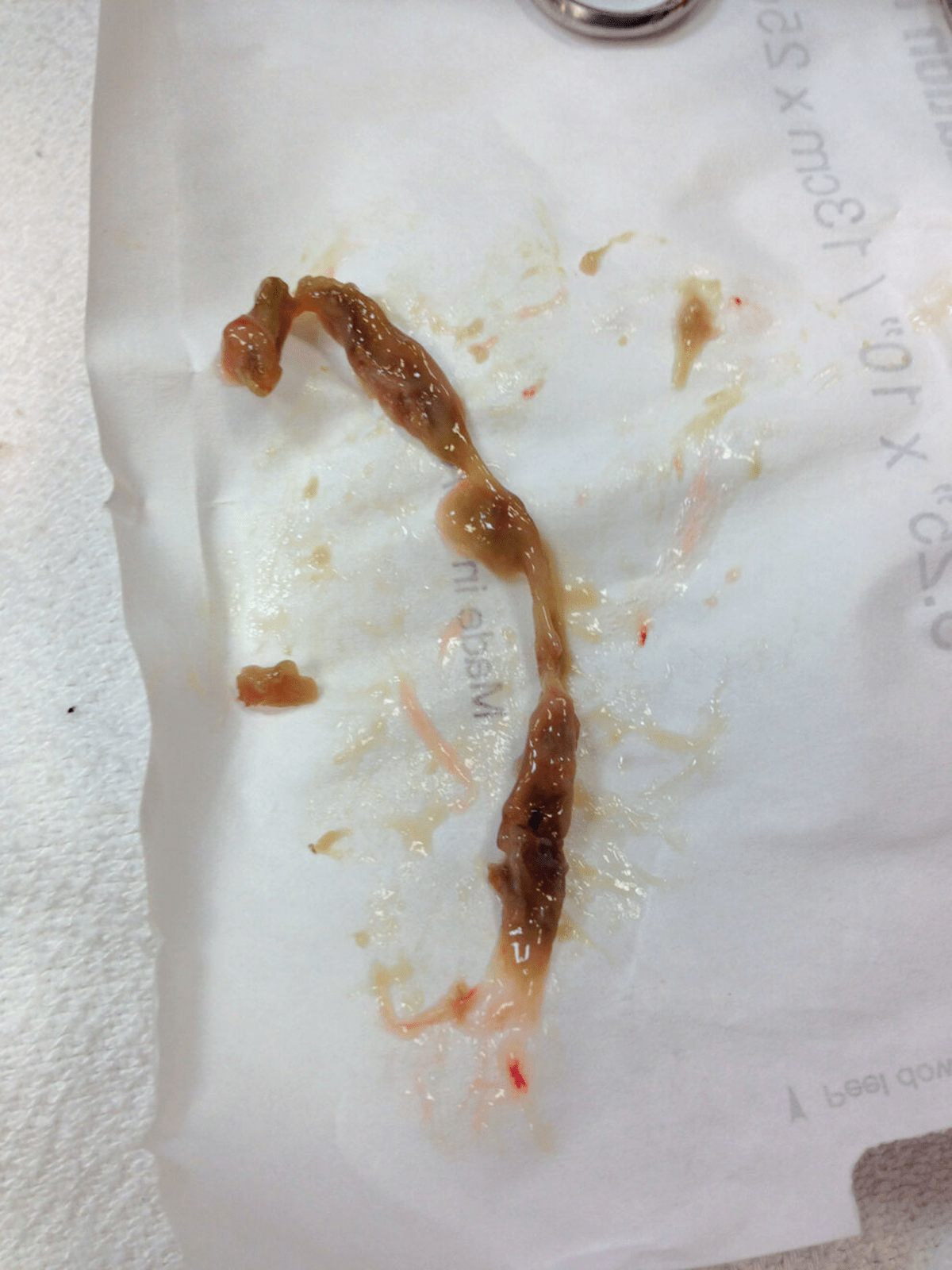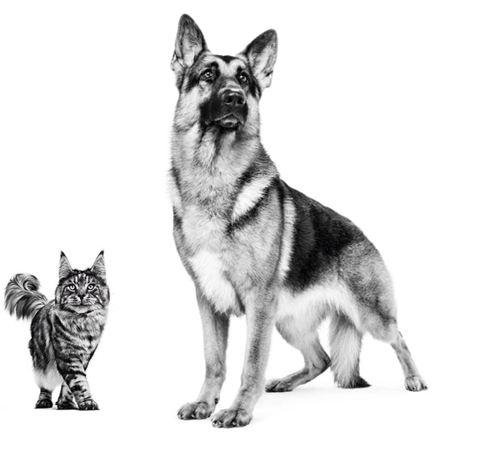
Get access to all handy features included in the IVIS website
- Get unlimited access to books, proceedings and journals.
- Get access to a global catalogue of meetings, on-site and online courses, webinars and educational videos.
- Bookmark your favorite articles in My Library for future reading.
- Save future meetings and courses in My Calendar and My e-Learning.
- Ask authors questions and read what others have to say.
How I Approach... The Sneezing Cat
Get access to all handy features included in the IVIS website
- Get unlimited access to books, proceedings and journals.
- Get access to a global catalogue of meetings, on-site and online courses, webinars and educational videos.
- Bookmark your favorite articles in My Library for future reading.
- Save future meetings and courses in My Calendar and My e-Learning.
- Ask authors questions and read what others have to say.
Read
Sneezing is a remarkably common presenting complaint in cats, and it is important for the practitioner both to have a good overview about the possible causes when presented with an affected cat or a clowder of cats, and to be aware of the various diagnostic and therapeutic options available.
Elizabeth Rozanski
DVM, Dip. ACVIM (SAIM), Dip. ACVECC
Dr. Rozanski obtained her DVM from the University of Illinois in 1992 then pursued a rotating internship at the University of Minnesota followed by a residency in Philadelphia at the University of Pennsylvania. Since 1996, he has been on faculty at Tufts University, working in the ICU and ER services. Board-certified in both internal medicine and emergency critical care, Dr. Rozanski’s interests are centered around respiratory disease, and in particular asthma in cats and dogs, and pulmonary fibrosis in West Highland terriers. The author of many papers on emergency care and respiratory illnesses, she also lectures both nationally and internationally.

Key Points
• The sneezing cat is one of the most common presentations in small animal practice. The practitioner should be well acquainted as to the possible causes, as well as the various diagnostic choices and available therapeutic options, when presented with such cases.
• In young, healthy cats with an acute onset of sneezing, an infectious etiology is most likely and the signs will normally resolve whatever therapy is chosen.
• Older cats that start sneezing may warrant further diagnostics, with the choice of tests based upon assessment of the patient and the owner’s wishes.
• Imaging, biopsy and possible rhinoscopy are the most likely investigations to result in a diagnosis, whilst PCR testing can be useful for confirmation of a chronic infectious cause.
Introduction
Sneezing is a remarkably common presenting complaint in cats, and it is important for the practitioner both to have a good overview about the possible causes when presented with an affected cat or a clowder of cats, and to be aware of the various diagnostic and therapeutic options available. Sneezing represents the body’s efforts to clear irritants from the nose, and is generally an involuntary process. Some causes of sneezing are self-limiting, such as exposure to a dusty basement, while others may be more progressive and even life-limiting. Practically, I feel that it often appears to make sense to divide sneezing cats into categories of “easy” or “complex” when determining the types of investigations that should be pursued when presented with these cats; “easy” cases are typically represented by kittens with mild upper respiratory infections, whilst “complex” cases represent cats with chronic disease that stubbornly refuses to resolve, or cases where the etiology remains elusive despite extensive testing. This paper offers a brief overview for the clinician presented with a sneezing cat.
Key historical questions and physical exam
As with almost all diseases, signalment is very useful in the evaluation of a cat that is sneezing. Other key historical questions I ask include verification of exposure to the outdoors or to other cats, the duration of clinical signs, the animal’s general appetite and activity levels, and the success of any prior therapies. It is important to identify if there has been any nasal discharge, including its characteristics, and whether it is uni- or bilateral. From a physical examination perspective, fever can support the diagnosis of infection; viral infections in particular are commonly accompanied by a high fever. Facial asymmetry or lack of airflow through one or both nostrils may be identified and more directly support the identification of nasal obstruction. Severe dental disease or the presence of an oronasal fistula may direct therapeutics towards treatment of dental pathology. Enlarged mandibular lymph nodes may support a diagnosis of infection (e.g., with Cryptococcus) or neoplasia. Cats that have recent significant weight loss, or appear otherwise unthrifty, are more likely to have serious underlying disease.
Potential etiologies
A multitude of potential causes of sneeze exist, and these can be largely divided into the following subcategories:
• Foreign body/irritant. This category includes inhaled objects such as cuterebra or blades of grass (Figure 1). Inhaled nasal foreign bodies as a cause of sneezing are more commonly seen in cats with outdoor access, and cases are most commonly encountered during the warmer months. Clinical signs tend to be peracute, and concurrent gagging is also common. Many cases are self-limiting and subsequently resolve, but for cases that do not resolve, further evaluation includes (at a minimum) an oral examination under sedation, and a nasal flush is often advisable (1).

Figure 1. This blade of grass had been present in a cat’s nose for five months and was associated with paroxysms of sneezing.
• Traumatic. This category includes cats with facial fractures which are most commonly due to road-traffic accidents (RTA). These cats will have sneezing due to trauma to the nasal turbinates and bleeding into the nasal cavity, often associated with facial fractures. This category rarely represents a diagnostic dilemma, although cats may refuse to eat if their nose is clogged with dried blood, and sneezing fits may result in significant hemorrhage. Advanced diagnostics are not warranted for sneezing associated with trauma, but may be useful for further evaluating the extent of the cat’s injuries.
• Infection. This is the one of the most common causes of sneezing in cats, with the most frequent agents being viral (herpesvirus, calicivirus) in origin. Bacterial infections, including Bordetella bronchiseptica, Streptococcus canis, Mycoplasma spp., and Chlamydophila felis have also been implicated as primary causes of upper respiratory tract infections in cats, although these are relatively rare. However, any case of rhinitis may become secondarily colonized by bacteria. Note that culture from a nasal swab is rarely helpful, as results typically reflect secondary colonization. For viral infections, isolation of the causal agent is challenging, and has more recently been largely replaced by PCR (polymerase chain reaction) testing. Cryptococcus infection may also result in sneezing; this is often easily documented via cytology, and serology is useful for demonstration of both infection and resolution.
• Inflammatory. Chronic rhinitis will result in the destruction of the turbinates and accumulation of mucus and debris, which may result in sneezing. Chronic rhinitis may be initially triggered by a variety of underlying diseases, but all will result in nasal discharge and sneezing (2). Histopathological evaluation may support the diagnosis of an underlying allergic cause if certain cellular infiltrates (e.g., lymphocytic-plasmacytic) are identified. Dental disease may also be considered inflammatory, or in some cases infectious. Figure 1. This blade of grass had been present in a cat’s nose for five months and was associated with paroxysms of sneezing.
• Neoplastic. Nasal neoplasia may cause sneezing, with the final diagnosis requiring histopathological sampling in order to determine tissue type (Figure 2). [...]
Get access to all handy features included in the IVIS website
- Get unlimited access to books, proceedings and journals.
- Get access to a global catalogue of meetings, on-site and online courses, webinars and educational videos.
- Bookmark your favorite articles in My Library for future reading.
- Save future meetings and courses in My Calendar and My e-Learning.
- Ask authors questions and read what others have to say.
About
How to reference this publication (Harvard system)?
Author(s)
Copyright Statement
© All text and images in this publication are copyright protected and cannot be reproduced or copied in any way.Related Content
Readers also viewed these publications
Subscribe
Access to the content of the Veterinary Focus website is reserved for animal health professionals. If you do not yet have a user account with Royal Canin you can create a free account by selecting the New User form. Subscription to the journal is free and issues in your preferred language can be obtained at the Veterinary Focus website.




Comments (0)
Ask the author
0 comments